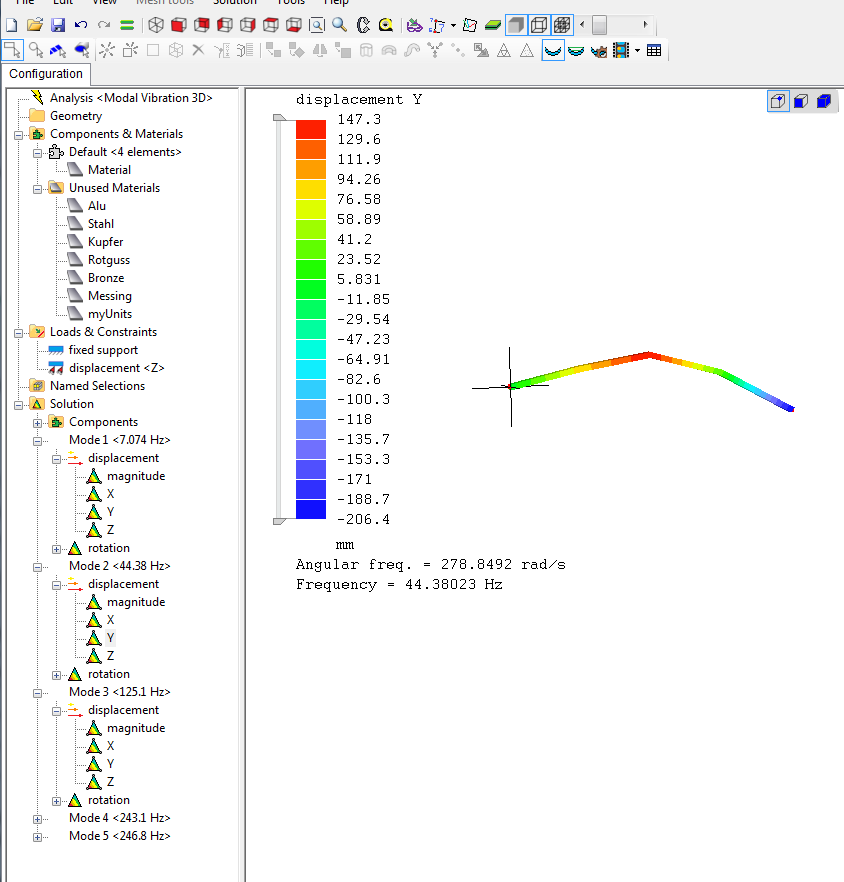Modal Vibration 3D
Hello
I have one question. When doing a modal vibration analysis (example 11.19) you'll get the eigenfrequencies and eigenshapes here y values. Does the hight of the y-numbers have any physically meaning?
Regards
Henning

I have one question. When doing a modal vibration analysis (example 11.19) you'll get the eigenfrequencies and eigenshapes here y values. Does the hight of the y-numbers have any physically meaning?
Regards
Henning

Howdy, Stranger!
It looks like you're new here. If you want to get involved, click one of these buttons!

Comments
As prop_design says, modal results can help you place strain gauges and also accelerometers. Once you've looked at your modes and know where to place accelerometers and what direction they are active, you can use two methods to determine the damping for that mode. A rap test will allow you to calculate the logarithmic decrement, and a sine sweep will allow you to obtain the amount of damping using the half power points. Look up those terms and I think you'll find the stuff is explained pretty well on the internet.
The transient 3D analysis is not that hard to set up, but the time stepping will often be very small, essentially 1/(10xfrequency) you are trying to capture. You can put in alpha / beta damping using CCX custom commands.
Look at this example for some Mecway tips
Nothing trivial about interpreting this stuff though, this is expert territory :-)
Calculix does give the mass participations, this is be found in one of the files developed by the solver.